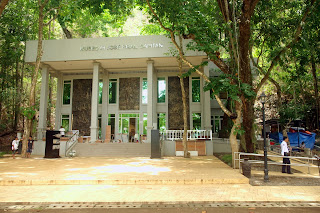Originally from Africa, Aloe Vera is a succulent cactus like
plant that is now cultivated in many regions of the world. It has lance like
leaves with spiny margins. Inside the leaf is a jelly like substance or gel that
is 99% water with the remaining 1% substance containing minerals, vitamins,
amino acids and enzymes. In the skin is yellowish color latex which has also
some healing properties. Usually, Aloe Vera is grown as a decorative plant or
as herbal medicine. It is commercially grown as food additives or as ingredients
in cosmetics products such as shaving cream, shampoos, soaps and tissues because
of its soothing, emollient and moisturizing properties.
As topical herbal medicine, the plant is used as a relief or
cure especially of skin disorders such as dandruff, acne, warts, wrinkles, gum
disease, genital herpes and even psoriasis. It is also administered to reverse
sign of aging skin, to brighten skin and to enhance hair growth. The gel
substance is harmful to bacteria, virus, and fungi, and promotes cell growth
and regeneration.
The juice of an Aloe Vera leaf can be taken orally by way of
adding it as ingredients of foods such as yogurts, beverages and some desserts to boost the immune system, to control blood sugar level and to improve blood
circulation. At certain doses, when ingested, Aloe Vera can cause abdominal
cramp and diarrhea which in turn decreases the body’s ability to absorb
prescribed drugs. A person should however consult his doctor should he use the
plant or part of it as a medicine. A doctor’s advice on health care should
prevail over what one has researched from the internet or heard through word of
mouth. Side effects of taking conventional medications as well as herbal remedies
and how long they should be administered should be taken into consideration if
a person is to deal with a health issue. And the right person to give him the
best information or recommendation is his doctor.
A single leaf of Aloe Vera that is applied topically can be
used for as long as three days if it is placed in a refrigerator. The leaf contains
gel that has lots of liquid so that a cut small piece of it can be rubbed to
many areas of an affected skin.
Extracts of Aloe Vera are being sold commercially online. But
the best way to get Aloe Vera gel is to grow the plant in your own garden. Aloe
Vera can be grown without much care and attention because it is resistant to
pests and insects. It can be propagated by separating its offsets by cutting
them off with a knife. It is better to grow the new plants on the ground than
in the pots because pots restrict their ability to reproduce or develop bigger
leaves.


































